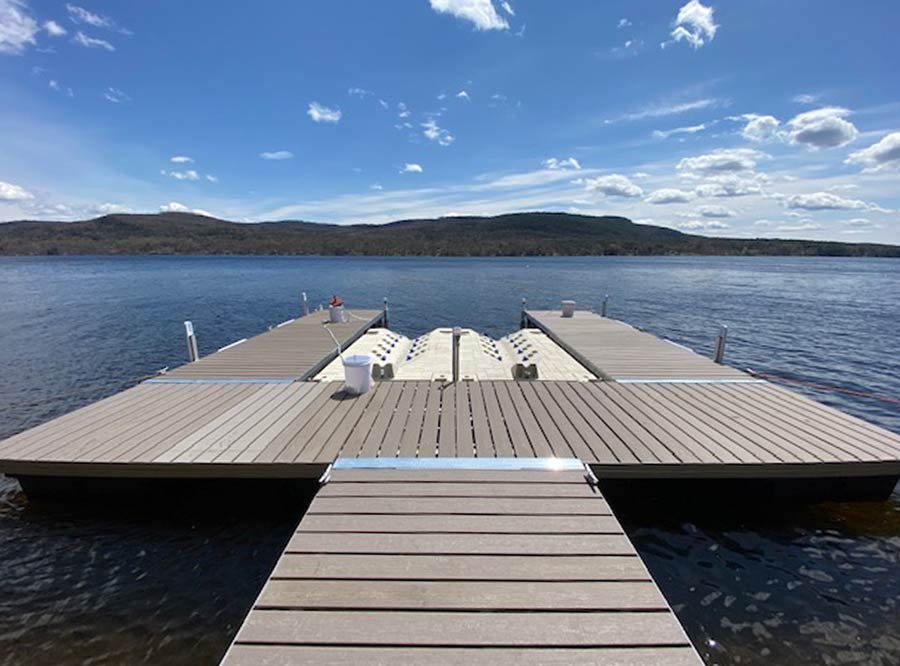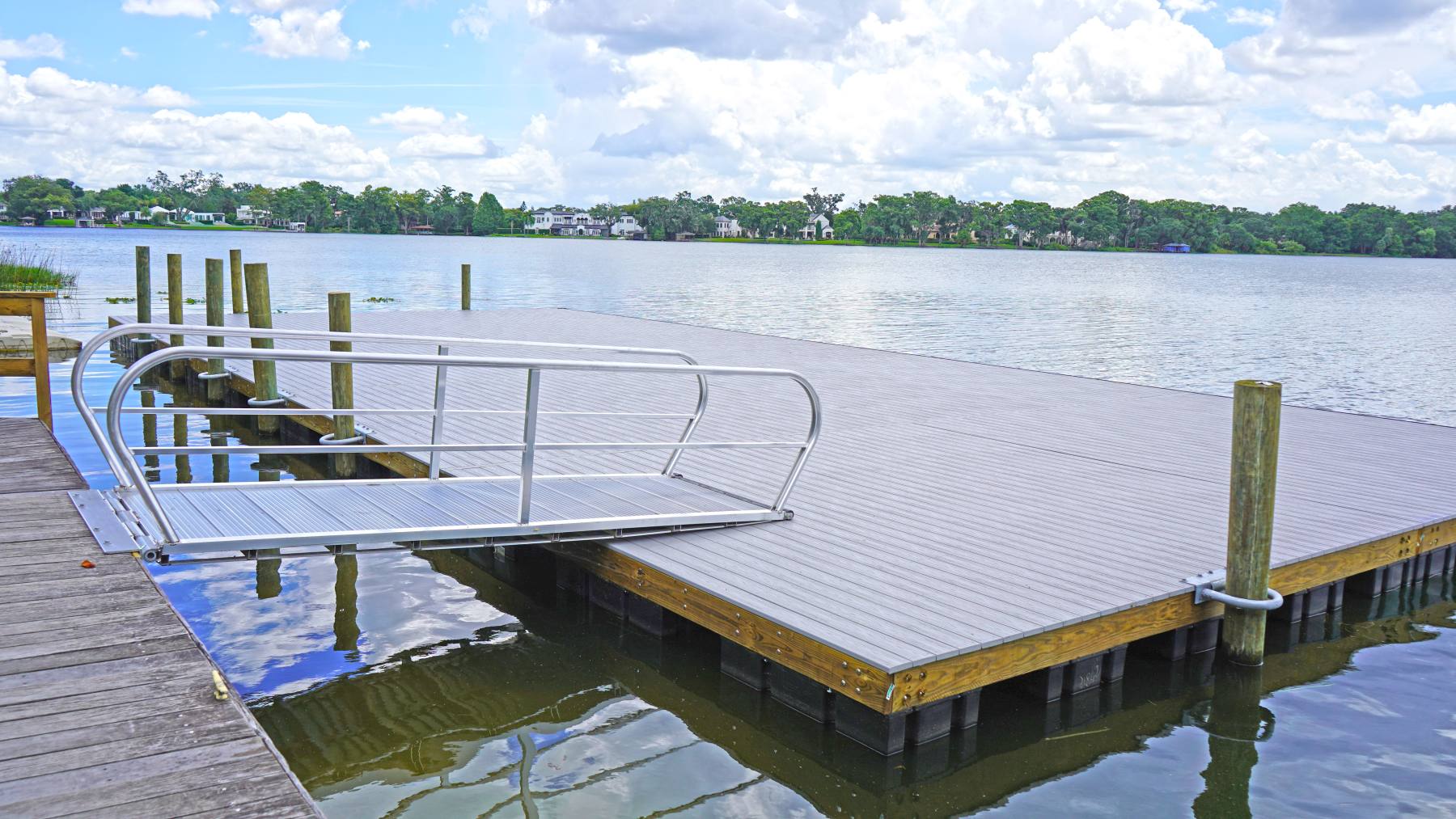Produce the Perfect Docking Remedy With Floating Docks
Floating docks present a versatile service for a variety of maritime needs, adapting effortlessly to fluctuating water degrees and varied vessel types. Their modular nature allows for rapid installation and relocation, yet the selection of ideal products and layout attributes is important for making sure both capability and visual charm. As we explore the important components that contribute to the effectiveness of floating docks, several key elements pertaining to stability and maintenance will certainly emerge, raising questions regarding how to maximize your docking experience. The succeeding discussion will certainly light up these crucial factors to consider.

Advantages of Floating Docks
Floating docks deal many advantages that make them an ideal selection for numerous maritime applications. Unlike taken care of docks, floating docks surge and fall with the trend, guaranteeing constant access for vessels.
In addition, floating docks are typically much easier and quicker to mount contrasted to traditional set frameworks. Their modular design enables for uncomplicated setting up and disassembly, promoting upkeep and relocation when needed. This flexibility is particularly valuable for short-term applications or in environments where problems may change.
Floating docks additionally have a tendency to be much more environmentally friendly, as they reduce interruption to the seabed and bordering marine environments. Their resilient nature decreases the risk of damages to aquatic life, advertising a healthier environment. These docks can be customized to fit various vessel dimensions, making sure that they satisfy certain functional requirements.
Ultimately, the combination of versatility, convenience of installation, and ecological factors to consider makes floating docks an extremely effective solution for a wide variety of maritime requirements.
Choosing the Right Products
Choosing the ideal materials for floating docks is crucial to make sure longevity, security, and longevity. The choice of materials straight affects the dock's efficiency in numerous environmental conditions, including direct exposure to water, sunshine, and prospective wear from marine web traffic.
Common materials utilized for floating docks include aluminum, timber, and high-density polyethylene (HDPE) Aluminum is lightweight, corrosion-resistant, and requires minimal maintenance, making it a superb selection for durability. Nonetheless, its preliminary cost can be higher contrasted to various other products.
Timber, while aesthetically enticing and providing a typical appearance, can be at risk to rot and bug damages otherwise correctly dealt with. Utilizing pressure-treated timber or normally durable varieties like cedar or redwood can alleviate these issues.
HDPE is a preferred option as a result of its resistance to UV rays and chemicals, in addition to being eco-friendly. dock company. It is available and lightweight in different colors, enabling personalization
Ultimately, the right material choice will certainly rely on certain demands, including spending plan, preferred visual appeals, and environmental factors to consider. Mindful analysis of these elements will cause a durable and effective floating dock solution.
Style Factors To Consider for Stability
When developing floating docks, making certain security is a fundamental aspect that can considerably impact their performance and safety. Security in floating dock design is influenced by different variables, including buoyancy, weight distribution, and the plan of parts. An optimal buoyancy system ought to utilize materials that give adequate lift while lessening weight. This equilibrium makes certain that the dock continues to be above water, also under differing tons.
Weight distribution is critical; equally distributing loads throughout the read the full info here dock protects against tilting and improves stability. This can be accomplished with critical positioning of docking devices, such as fenders and cleats, along with appropriate spacing of drifts. Furthermore, the measurements of the dock must be thoughtfully intended. Larger styles can offer raised security, especially in rough water problems, while longer docks might require added supports to avoid sagging.
One more key consideration is the environmental influence, consisting of wave activity and wind. Incorporating functions such as sidewalls or skirting can assist mitigate the results of ecological pressures, maintaining stability in damaging conditions. Eventually, a mix of thoughtful style, product option, and understanding of view it environmental factors will certainly yield a floating dock that satisfies both stability and safety and security demands.
Installation Tips and Strategies

Next, safeguard the necessary permits and follow regional policies, which may dictate installment methods and environmental considerations. If called for, involve a certified contractor experienced in floating dock setups. Use premium products developed for marine settings to improve sturdiness and durability.
When positioning the dock, align it identical to the coastline to promote simple gain access to. Ensure that the anchoring system is robust, utilizing cinder block or helical supports to stabilize the dock versus wind and wave action. It's important to account for seasonal water degree changes, including possible ice movement in great post to read colder environments.
Throughout the installment, confirm the dock's floatation and stability prior to settling the anchoring. Frequently examine the installation for any type of signs of wear or damage. By following these pointers and methods, you can attain a safe, functional, and cosmetically pleasing floating dock installation that meets your requirements.
Maintenance and Treatment Standards
Preserving and caring for floating docks is important to lengthening their life-span and making certain safe usage. Routine evaluations should be conducted to determine any kind of signs of wear, damage, or marine growth. Try to find splits, loosened installations, or discolored areas on the dock's surface, as these issues can jeopardize structural stability.
Cleansing is essential. Make use of a pressure washer to eliminate algae, barnacles, and debris, which can collect with time. For stubborn growth, think about eco-friendly cleaner that will not hurt water life.
In addition, check the mooring lines and anchors regularly to ensure they are safe and complimentary from deterioration. Change any torn or harmed lines immediately to preserve stability.
During extreme climate, such as storms or freezing problems, take preventive procedures. Protect the dock with added mooring lines and, if viable, remove any removable elements to avoid damages.
Final Thought
Finally, the implementation of floating docks provides a reliable and functional docking option appropriate for various maritime applications. Their flexibility to varying water levels, combined with a modular layout, allows for simple customization and moving. Choosing suitable products boosts both sturdiness and visual allure, while careful factor to consider of stability guarantees safety and security and durability. With correct setup and regular upkeep, floating docks can provide dependable and reliable docking experiences for a large range of vessels.
As we check out the important aspects that add to the efficiency of floating docks, a number of vital factors pertaining to stability and upkeep will certainly arise, raising questions concerning how to optimize your docking experience. Unlike taken care of docks, floating docks rise and fall with the tide, making sure consistent access for vessels.When creating floating docks, ensuring security is a basic facet that can significantly affect their capability and safety. Stability in floating dock design is influenced by various elements, consisting of buoyancy, weight circulation, and the plan of elements. Eventually, a mix of thoughtful layout, product option, and understanding of ecological aspects will yield a drifting dock that satisfies both security and safety needs.